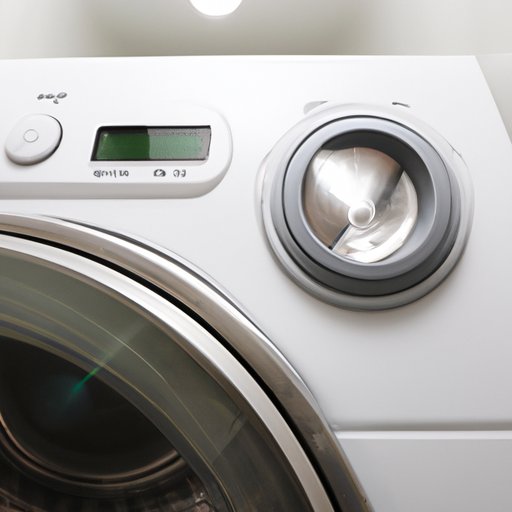Introduction
A washer is an essential appliance in many households. But what does a washer do? A washer is a type of washing machine that is used to clean clothes, linens, and other items. It is designed to use water and detergent to agitate and rinse fabrics. Most washers are equipped with a variety of settings and cycles to provide optimal cleaning results.
How a Washer Works
Washers typically consist of a tub or drum, a motor, and a timer. The tub is filled with water and detergent and then the clothes are added. The motor then rotates the tub rapidly, creating a tumbling action that helps to move the clothes around in the water. As the timer counts down, the washer will switch from one cycle to another, such as from wash to rinse. At the end of the cycle, the washer will drain the water and spin the clothes to remove excess moisture.

Benefits of Using a Washer
Using a washer can provide a number of benefits. One of the main advantages is time and cost savings. Washing clothes by hand can be a time-consuming chore, but a washer can reduce the amount of time spent on laundry. Additionally, using a washer allows you to use less water than hand-washing, resulting in cost savings on your water bill. Lastly, a washer can provide improved cleaning results compared to hand-washing. The agitation and tumbling action of the washer helps to remove dirt and stains more effectively.
Different Types of Washers and Their Uses
There are several different types of washers available on the market. Top-loading washers are the most common type and feature a lid on the top of the machine. These washers typically require the user to manually add detergent and fabric softener. Front-loading washers are becoming increasingly popular due to their energy efficiency and space-saving design. These washers have a door on the front of the machine, which makes it easier to load and unload clothes. High-efficiency washers are also gaining in popularity due to their ability to clean clothes using less water and energy than traditional washers.
Troubleshooting Common Washer Issues
From time to time, washers may experience issues that need to be addressed. The first step in troubleshooting a washer is to understand any error codes that may appear. Many washers display error codes that indicate the source of the issue. It’s also important to identify any common malfunctions that may be occurring. For example, if the washer is not spinning or draining properly, the cause of the issue could be a clogged pump or a worn belt. Lastly, there are a few tips that can help to resolve common washer issues. For instance, making sure the washer is level and checking the power connections can help improve performance.
Conclusion
In summary, a washer is an essential appliance that can save time, money, and energy when it comes to doing laundry. There are various types of washers available on the market, each of which offers its own set of benefits. Additionally, understanding error codes and identifying common malfunctions can help to troubleshoot any issues that may arise. With proper maintenance and care, a washer can provide years of reliable service.


